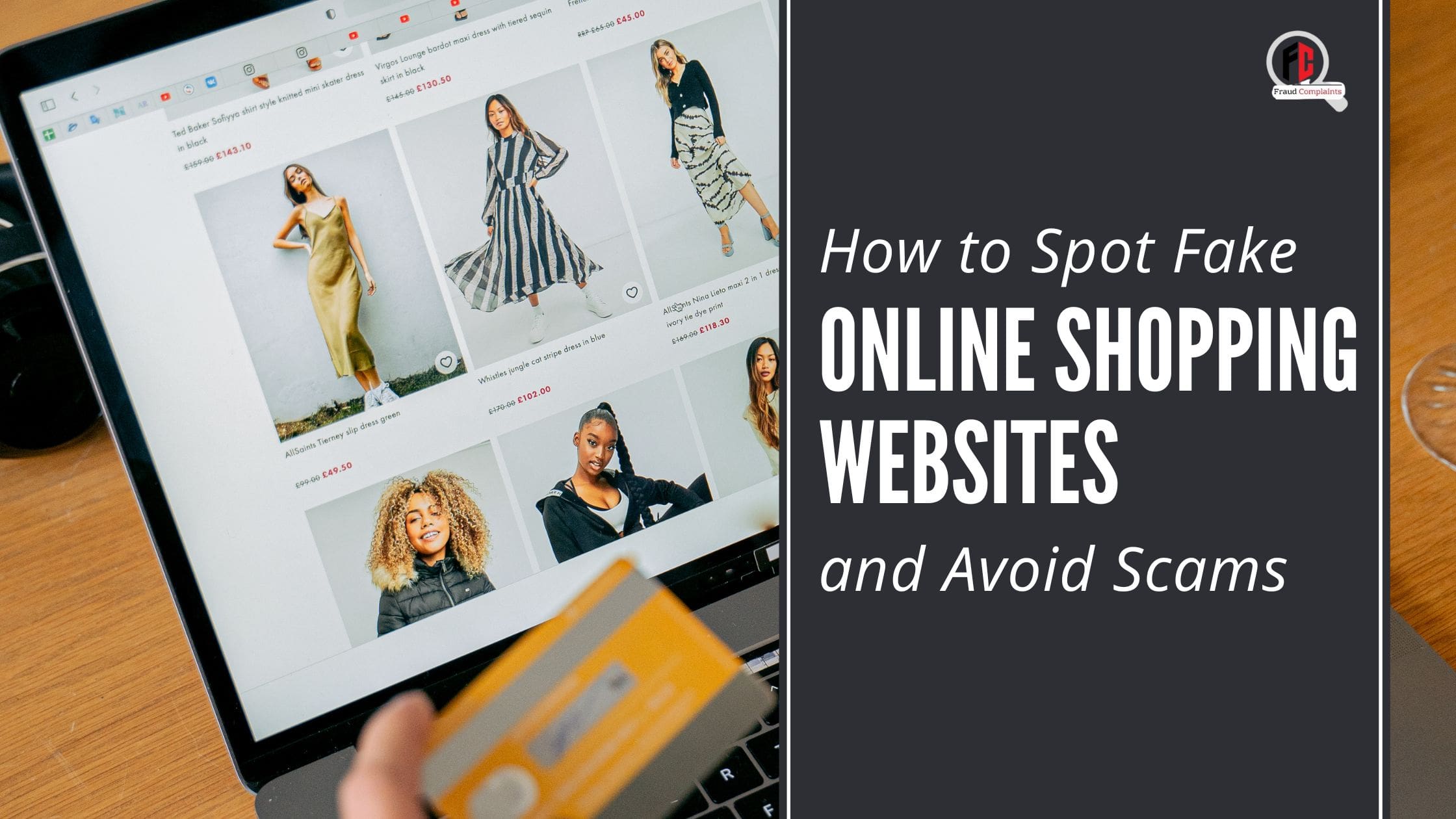Online shopping is meant to simplify life—but for many, it has become a trap. Fake shopping websites are appearing at an alarming rate, leaving victims with empty wallets, stolen personal information, and no way to track down the scammers. These sites are polished, deceptive, and crafted to fool even the savviest online shoppers.
If you’re sick of falling victim to online shopping scams—or wish you could guarantee that you would never do so—keep reading. We’ll dissect how to identify counterfeit websites, dodge typical traps, and get out of an online shopping scam if you’ve already been victimized.
Why Fake Online Shopping Scams Are on the Rise
With more individuals than ever before shopping online, scammers have hit the jackpot. Bogus online shopping websites replicate legitimate ones—full of flashy graphics, bogus reviews, and deep discounts aimed at reeling you in. After you click “buy,” your money is lost, and the product never arrives.
What’s worse, the scams tend to be served with a side of identity theft. By putting in your name, address, and credit card details, you may be providing sensitive information to cybercrooks.
Red Flags: How to Identify a Bogus Online Shopping Website
Being able to identify fake websites can save you money, time, and hassle. These are the most frequent warning signs:
1. Too-Good-To-Be-True Prices
If a designer handbag is listed at 90% off, or the latest iPhone is priced at $150, you’re likely looking at a scam. Unrealistic discounts are bait for unsuspecting shoppers.
2. No Contact Information
Legit retailers always offer customer service contact details. A lack of phone numbers, email addresses, or physical locations is a major red flag.
3. Shady URLs
Phony shopping sites tend to employ suspicious-looking domains—such as added characters, strange hyphens, or strange extensions (i.e., .xyz, .store). Use only recognized domain names or try the brand’s official website by name.
4. Terrible Grammar and Design
Misspells, sloppy grammar, and low-res photos generally indicate that the site wasn’t professionally created. Reputable companies put money into clean content.
5. No Secure Checkout (No HTTPS)
A legitimate website URL starts with “https://” and has a padlock symbol. If you don’t notice that, don’t type in payment details. Period.
6. Shady Return or Privacy Policies
If you can’t locate return details, or the privacy policy is unclear or doesn’t exist, consider it a red flag to leave.
Quick Checklist to Check Legitimacy
Before you hit “Buy Now,” go through this checklist:
- Google the site name + “reviews” or “scam”
- Check for a physical address and working phone number
- Check return and refund policies
- Check if they accept secure payments (credit card, PayPal—not wire transfers or gift cards)
- Check them out on the Better Business Bureau or similar watchdog websites
- Search for the company on social media to see if others have posted complaints
Common Fake Online Shopping Scenarios
Fake online shopping can be in the form of many different things. Be wary of the following situations:
- Facebook or Instagram Ads: Many scam stores advertise heavily on social media using stolen product images and fake video testimonials.
- Pop-Up Websites: These scammy sites show up overnight and disappear just as fast after stealing from customers.
- Fake Brand Stores: Some websites pretend to be official outlets for Nike, Apple, or other big brands. Always double-check the URL and branding.
What to Do If You’ve Been Scammed
Already ordered and think something’s wrong? Here’s what to do quickly:
1. Call Your Credit Card or Bank
Report the fraud and ask for a chargeback. You have a better chance of recovering your money the quicker you act.
2. Update Your Passwords
If you used the same password on another site, update it straight away. Scammers usually attempt to use your login details on other websites.
3. Report a Complaint
Don’t let the scammers get away with it. Report shopping scam activity to warn others and assist law enforcement in tracking down the fraudulent site.
4. Watch Your Credit
If you provided personal information, take the step of having a fraud alert placed on your credit report and monitoring for unusual activity.
Tips to Avoid Online Shopping Scams in the Future
Following are some tips to safely shop online and avoid counterfeit sites:
- Use Credit Cards, Not Debit Cards: Credit cards have more built-in fraud protection.
- Stay with Familiar Retailers: If it’s a new website, do research first.
- Don’t Be Hurried: The scammers rush you—”Only one left!”—so you’ll act too quickly. Slow down and investigate.
- Bookmark Your Favorite Retailers: This way, you don’t inadvertently click on a pretend duplicate through an advertisement or search results.
- Use Antivirus Software: It may be able to identify suspicious websites and block malware from fake websites.
Final Thoughts: Stay One Step Ahead of Fake Shopping Sites
Fake online shopping sites aren’t going anywhere—but with awareness and caution, you don’t have to get caught. The next time you notice a deal that is too good to be true, listen to your instincts. It likely is.
And if you have already been robbed, be assured you are not alone. Fraud Complaints can assist you to recover online shopping scam losses and in reporting the purchase scam so nobody else falls victim to the trap.
Stay alert, shop smart, and protect your wallet from the scammers lurking behind fake websites.
